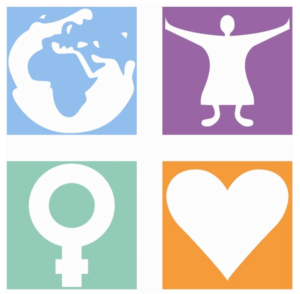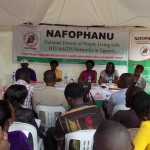As a young woman living in Uganda, I’ve seen firsthand how girls my age are grappling with the challenges of poverty, gender inequality, and harmful cultural practices. But what worries me the most is the growing rate of new HIV infections, especially among adolescent girls and young women (AGYW) like myself, aged 15 to 24.
Our communities are facing a crisis. More and more girls are contracting HIV because of the situations they find themselves in—situations where they have little or no control over their lives and decisions.
The rise in HIV infections among AGYW can be traced back to a number of issues. One of the major reasons is poverty, especially in urban slum areas like Bwaise, Katwe, Kawempe, Kisenyi, and Makindye. Many young girls drop out of school because their families can’t afford school fees, and with no other options, they turn to commercial sex work to survive. This makes them highly vulnerable to HIV.
Another factor is gender-based violence (GBV) and cross-generational relationships, where older men, who are old enough to be our fathers and uncles, prey on young girls. These relationships are unequal, and young girls often have little power to negotiate for safer sex, putting them at higher risk of HIV. Many girls in my community think pregnancy is a worse fate than contracting HIV, not understanding the lifelong burden of managing the virus with daily medication.
The reality is that most at-risk populations don’t take HIV seriously. For many, it’s a myth—something that happens to other people, not to them. But the statistics and stories around us show a different truth. HIV is spreading rapidly, and it’s time to take action before more lives are affected.
Prevention tools are the answer
In the past, we were taught the ABC method—Abstinence, Be faithful, and use Condoms. But let’s be honest, times have changed. Many girls cannot abstain, are not faithful in relationships, and don’t consistently use condoms. We need better, more realistic solutions to address the realities young women face today.
That’s why prevention tools like DVR, CAB-LA and LEN are so important. These tools give us the power to protect ourselves, and they must be made available, accessible and affordable to every girl and young woman.
We need to invest more in prevention, awareness, and education to bring down the number of new HIV infections by 2030. This means bringing together all stakeholders—health workers, parents, schools, religious leaders, the police, and the government—to create more programs that focus on HIV prevention and sexual health education. Local initiatives like the Tusitukirewamu Group in Bwaise have been making a difference by providing vocational skills, free sexual and reproductive health services, and shelter for GBV victims. But they can’t do it alone.
The government needs to increase funding for these grassroots programs so they can reach more girls like me. We need more youth-friendly clinics, accessible PrEP and PEP, and continuous education on HIV. And we need to challenge harmful cultural norms that put girls in vulnerable positions in the first place.
My Vision for the Future
I dream of a future where girls in Uganda are empowered with the knowledge and tools they need to protect themselves from HIV. A future where girls don’t have to turn to commercial sex work to survive, where they can stay in school and build careers. A future where girls are free from the threat of HIV, GBV, and harmful traditions that limit their potential.
But that future can only be achieved if we act now. It’s time for all of us—governments, NGOs, community leaders, and individuals—to come together and ensure that every girl in Uganda has the chance to live a healthy, safe, and empowered life. Together, we can make this vision a reality and turn the tide on new HIV infections.



